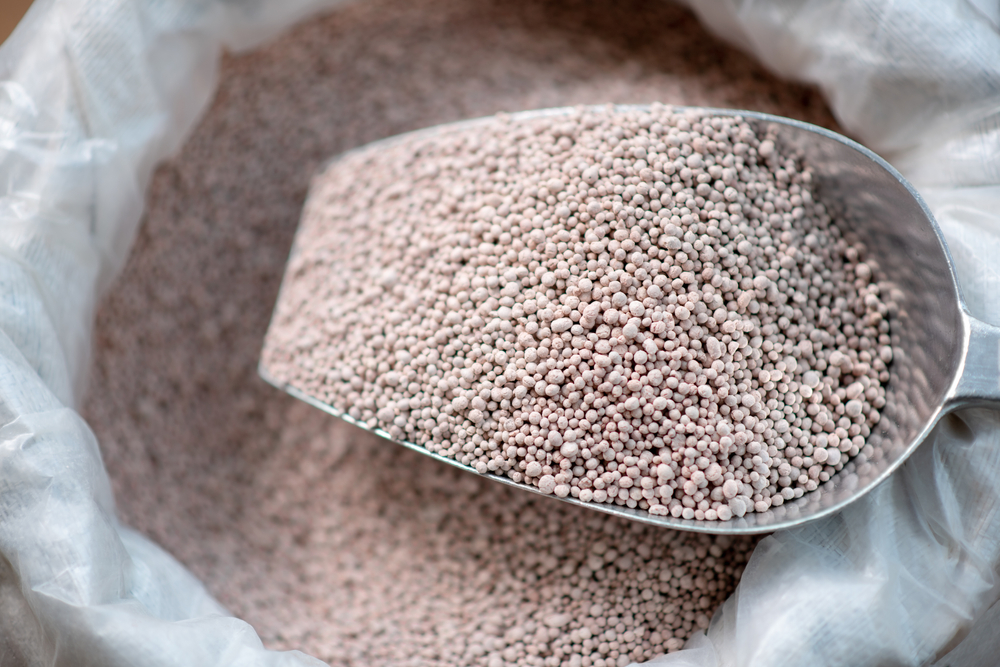Global supplies of one of the main ingredients of fertilizer are running low, but researchers believe that restoring wildlife populations could help address the shortage.

When it comes to growing crops, fertilizer is a vital component. And when it comes to making fertilizer, phosphorus—a mineral crucial to living organisms—is often a key ingredient.
So what happens to the agriculture industry if phosphorus, of which stock is diminishing, runs out?
A new study, published in Science of the Total Environment and conducted by researchers at Northern Arizona University, suggests that looking to wildlife might be the answer to the shortage of the vital mineral.
Typically, phosphorus is mined from rocks. The mineral is then used as fertilizer, applied liberally to fields and crops across the world. But the phosphorus doesn’t stick around. Instead, it leaches from these fields and is whisked away by rivers and streams, eventually ending up in the ocean—often in deep ocean sediment that leaves the mineral out of reach.
The authors of the study explain that before humans dominated phosphorus’s transportation around the globe, it was originally animals, such as whales, seabirds, fish and even bears, that moved minerals around their ecosystems, returning it from sea to land.
“Animals are like a natural circulatory system for phosphorus,” said co-author Joe Roman, conservation biologist and researcher at the University of Vermont. “They can move nutrients through their carcasses, urine and dung.”
Co-author Andrew Abraham, a post-doctoral researcher in Northern Arizona University’s School of Informatics, Computing, and Cyber Systems, said, “In doing so, they collectively retained this nutrient in the biosphere, supporting a more fertile planet. Today, however, species extinctions, diminished population abundances and the erection of fences and dams have reduced this nutrient transport service by more than 90 percent.”
RELATED: Farmers Struggle to Keep Up With the Rising Costs of Fertilizer
Now, with a shortage of the popular fertilizer, prices for phosphorus are skyrocketing. Farm Policy News reported that phosphorus fertilizer recently reached a price of $1,079/ton, tying the all-time price high.
But phosphorus being lost at sea isn’t the sole source of the shortage. With sanctions against Russia (one of the world’s biggest fertilizer exporters) and overall supply disruptions as a product of the war, fertilizer has become increasingly difficult and more expensive for farmers to get their hands on—creating a price surge domino effect in the food supply chain.
Restoring wildlife populations, according to the researchers, would address the shortage and “re-vitalize the natural pump” of phosphorus back from the ocean to land.
The study goes on to suggest a global phosphorus trade, similar to the way carbon is traded now, in which the overall goal would be to keep the mineral out of unreachable parts of the ocean for good.
“If it is cheaper or easier to invest in a biodiversity project that retains a known quantity of phosphorus in ecosystems, a country or business could invest in such projects,” said Chris Doughty, associate professor of ecoinformatics, who co-authored the study.
In this way, the study says, “localities could either benefit directly—from animal-mediated fertilization such as bird guano—or indirectly—by continuing to use mined fertilizer and relying on other countries to sponsor a biodiversity project in hopes of retaining phosphorus within the global biosphere.”
I agree with this article that phosphorus (P) is becoming a limited and expensive resource. But to clarify a bit on soil loss: In most medium to heavy textured soils and the associated organic matter (OM) fraction, applied P fertilizer soon becomes bound to the soil and OM particles. A small amount of P is then continually leached into the soil solution (the free water between soil particles that fine roots penetrate take up for plant use). Runoff from fields carries soil particles with attached P to pollute waterways. Light, sandy soils tend to bind much less P, and fertilizer… Read more »